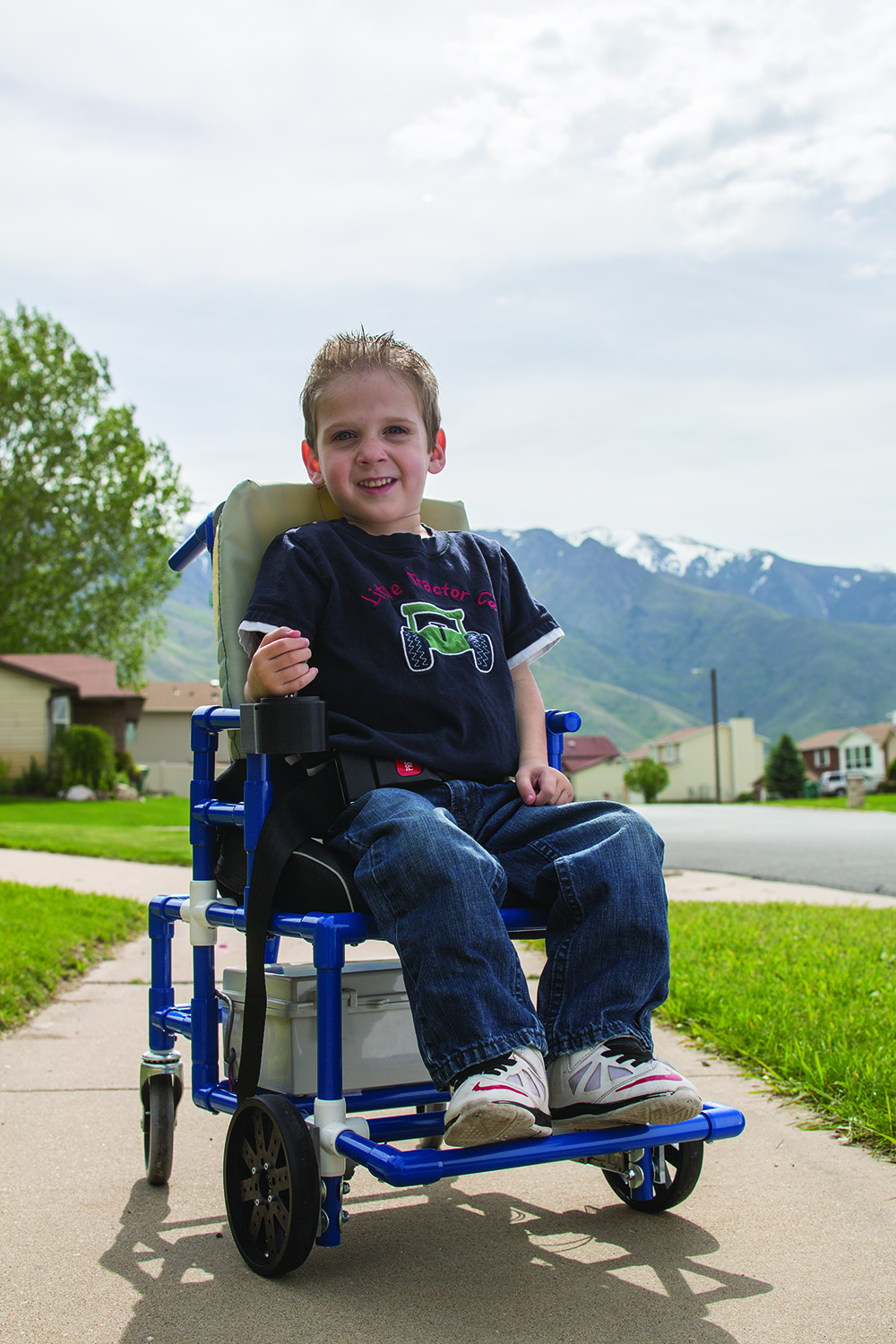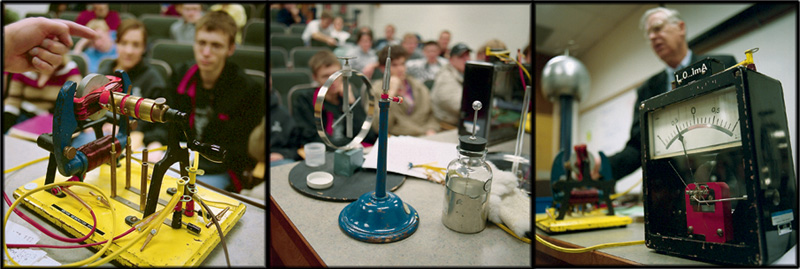Tanner Jensen, 4, can now keep up with the neighborhood kids, thanks to BYU engineers.
Tanner Jensen, 4, can now keep up with the neighborhood kids, thanks to BYU engineers. He cruises around in possibly the smallest, lightest, and least-expensive wheelchair ever, with a PVC-pipe frame that can be adjusted as he grows. And unlike many standard power chairs, which are wide and heavy, the BYU chair won’t require remodeling a house or buying a new car. In fact, two of these wheelchairs—the team is making a second for Tanner’s 2-year-old brother, Skyler, who also has spinal muscular atrophy—can be folded and tossed, rather than mechanically lifted, into the trunk of the Jensens’ sedan. “This is definitely an unmet need in the medical community,” says Esther Jensen, the boys’ mother.
For their mechanical engineering capstone project, A. Zach Zimmerman (BS ’15), Adam H. Bangerter (BS ’15), Ian J. Freeman (BS ’15), Daniel N. McRae (BS ’15), and E. Justin Taylor (BS ’15) spent two semesters designing and building the wheelchair. Instructions to build the chair are available free online at openwheelchair.org.
 Cost: $490.40. The team beat the budget set by project sponsor Tim Gunsay by a few bucks. A standard power chair runs $2,000–$7,000.
Cost: $490.40. The team beat the budget set by project sponsor Tim Gunsay by a few bucks. A standard power chair runs $2,000–$7,000.
Dimensions: 29.75 inches high, 13.5 inches wide, and 22.5 inches long. A standard power chair starts at 32 by 22 by 27.
Speed: 4 mph. The team had the first prototype going much faster but reined it in to match the standard power-chair speed.
Weight: 20.5 pounds. A standard power chair is 100–300-plus pounds.
PVC Pipe: Longer pieces of pipe can be substituted to expand the chair for children up to 50 pounds.
Battery Life: 1.5–2 hours. A slightly heavier battery would last the whole school day.









